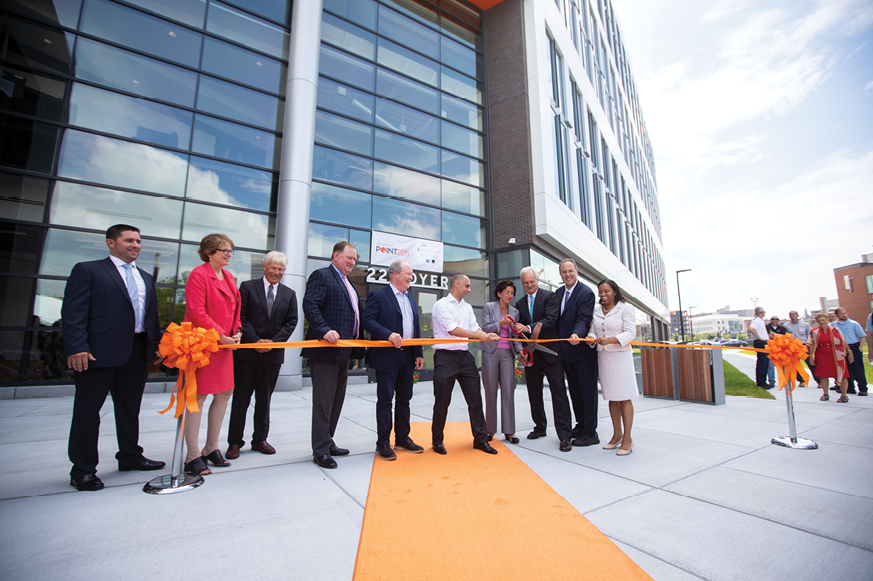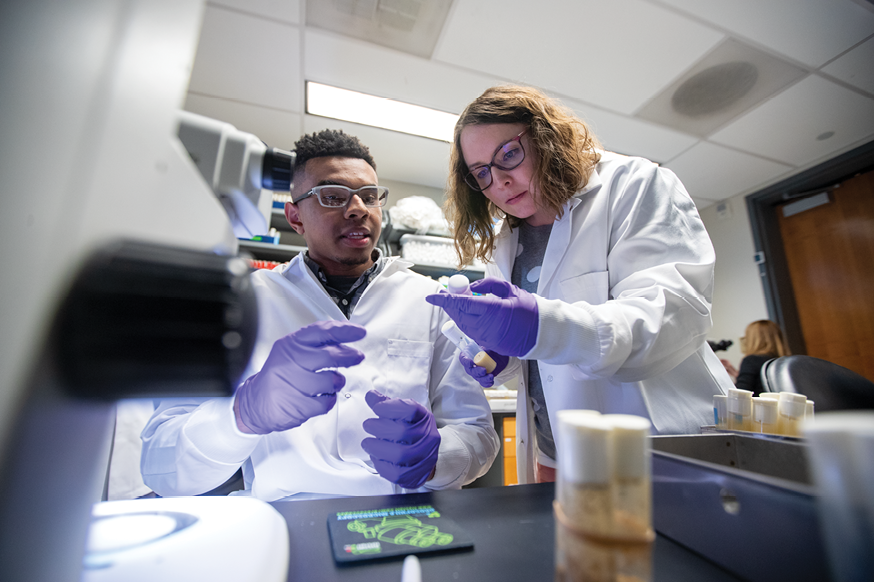- Home
- Media Kit
- Current Issue
- Past Issues
- Ad Specs-Submission
- Ad Print Settings
- Reprints (PDF)
- Photo Specifications (PDF)
- Contact Us

![]()
ONLINE

Developing Open,
Well-Educated Minds
Editors’ Note
Christina H. Paxson is the nineteenth president of Brown University and Professor of Economics and Public Policy. She assumed the role of president on July 1, 2012. Prior to her appointment at Brown, she was dean of the Woodrow Wilson School of International and Public Affairs and the Hughes Rogers Professor of Economics and Public Affairs at Princeton University. While at Princeton, she also served as associate chair and chair of the Department of Economics and was the founding director of a National Institute on Aging Center for the Economics and Demography of Aging. She founded the Center for Health and Wellbeing in the Woodrow Wilson School, for which she served as the director until 2009. Paxson is nationally recognized as a leader in higher education and a respected economist and public health expert. She has been the principal investigator on a number of research projects supported by the National Institutes of Health, has authored or co-authored numerous journal articles, was elected vice president of the American Economic Association in 2012, and is a member of the Council on Foreign Relations. Paxson is currently the vice-chair of the board of directors of the Boston Federal Reserve Bank, vice-chair of the board of the Association of American Universities and a member of the American Academy of Arts and Sciences. Paxson is an honors graduate of Swarthmore College, Phi Beta Kappa, and earned her M.A. and Ph.D. graduate degrees in economics at Columbia University.
Institution Brief
Founded in 1764, Brown University (brown.edu) is a leading research university home to world-renowned faculty and is an innovative educational institution where the curiosity, creativity and intellectual joy of students drives academic excellence. The spirit of the undergraduate Open Curriculum infuses every aspect of the University. Brown is a place where rigorous scholarship, complex problem-solving and service to the public good are defined by intense collaboration, intellectual discovery and working in ways that transcend traditional boundaries. Providence, Rhode Island, has been Brown’s home for more than two and a half centuries.

Ribbon cutting for the 225 Dyer Street building that houses
Brown’s School of Professional Studies in the Jewelry District
How do you define the Brown University difference?
Several elements distinguish Brown, and they are interrelated. One core attribute is Brown’s openness and commitment to open intellectual inquiry. This arises from our long standing Open Curriculum, now in its 50th year, which calls on Brown students to be the architects of their own education.
Brown students are fearless in their approach to problem solving. They are intellectually engaged at a level beyond anything I’ve seen anywhere else, and Brown’s faculty mirror this same depth of intellectual curiosity and tenacity. Over the years, faculty members have adopted a Brown approach that blends this intellectual freedom with intense collaboration, even if they completed their graduate work at other universities. It’s the collaboration piece that is another mark of distinction at Brown that goes along with the openness. When I came to Brown, I was struck by how seamlessly faculty work together within and across departments and even across divisions. They work with students in a really wonderful, flexible way.
Another core attribute is that we’re a leading research university without being an ivory tower. There’s a very practical edge to much of the work that happens here. Our faculty and students are focused on how what they’re researching and learning is going to make a difference in the world.
The final point I’ll note is that Brown is known for its commitment to diversity. Since its founding over 250 years ago, Brown has maintained a commitment to openness and diversity of thought and experience. The understanding of the value of this diversity to an educational institution has stayed with Brown throughout its existence. Those are the characteristics that I found when I came here in 2012 and that I fell in love with. It’s been a joy to say, “Okay, how can we take this and build on it to make an even greater university founded on these themes and ideas.”
You developed a 10-year strategic plan for Brown. How important was it to engage the faculty, administration and students in the creation of the strategic plan?
Engagement across the community was essential. Leading a university is in some ways more like being a mayor of a city than it is being a CEO of a company. You have numerous different constituencies. You have alumni, varying groups of students, faculty and staff, and people within the broader community. They all have a stake in what you’re doing, and they all care about it which is fabulous. The challenge is to engage all of these different groups and ensure they all have a voice in the process. When you do this, the result is a plan that reflects a rich range of perspectives, but is truly strategic.
At many universities, strategic plans have the tendency to have everything but the kitchen sink thrown in, trying to be everything for everybody. We worked very hard developing this strategic plan to focus on areas where Brown has the capacity to be really excellent, but through an inclusive process so that all members of the community could participate and envision themselves as being part of what we’re building at Brown.

Research being conducted in the Kate O’Connor-Giles Lab
Will you discuss Brown’s innovative curriculum?
The innovative curriculum is one of Brown’s hallmarks. A key driver is that our students, who are ultimately the best innovators we have, have a large voice in the educational experience. Faculty members do, as well, and they are always thinking about how we adapt to keep pace with a world that is constantly changing. This allows innovation to happen somewhat naturally. Over the past six to eight years, we’ve seen a growing voluntary recognition on the part of students and faculty, and particularly younger faculty, that everybody has to understand digital technologies and data. This means that those tools have to be integrated into disciplines across the university, from science to history to the arts and the humanities. It has been very interesting to observe students flocking to computer science and data sciences in droves, fueling creative intersections and discovery across fields of study.
One of the reasons I love the Brown approach to education is that it isn’t focused only on the first jobs students will take upon graduation. The idea is to educate students who have benefited from building multifaceted educations in different ways. It’s common for a Brown student to say, “I’m studying neuroscience and philosophy” or “I’m studying computer science and theater and performance studies.” When you ask them why that makes sense, they can tell you why it makes sense for them. We see the impact in the way they solve complex problems like those they’ll encounter in life after Brown. If we move into a world where we don’t know what the jobs will be in 20, 30, or 40 years, this type of education encourages people to continue to learn over time and to bring different ways of thinking to solve the complex challenges facing society. It is actually more valuable than it has ever been. While they’re getting the specific tools they need now, they’re also developing open, well-educated minds, which is something the world needs.
Will you highlight Brown’s focus on research?
Research is essential to everything we do. If you’re an institution that is dedicated to advancing knowledge through research and education, and also that understands and appreciates how they work together to benefit society, that makes for a great research university. Service is one of the major components of our mission. Brown students, faculty and staff are driven by the idea that their work will have an impact in the world.
Also, the faculty members at Brown involve students, from undergraduate students to graduate students to medical students, as partners in their research and scholarship. Instead of being bifurcated with the education happening separately from the research, they complement each other in meaningful ways.
How important has it been for Brown to build public/private partnerships with government, business and industry?
I believe that the story of Brown is also the story of Providence and Rhode Island. We have been intertwined since the founding of the republic. Brown has a vision to not only be a member of the community, but also a partner in its success.
Providence is a great city, and Rhode Island is a state that is vibrant and full of promise. In a way, it’s almost like a city-state, because the metropolitan center is also the seat of state government. This means I likely have the opportunity to interact with our government and business leaders in both the city and state more routinely than leaders at other higher education institutions. This has enabled ambitious public-private partnerships to fuel economic development of an area of Providence called the Jewelry District. It’s the region of the city where there used to be jewelry factories, which all disappeared when that business moved overseas and left the area economically depressed.
Through partnerships with the state and private businesses, we renovated and repurposed an old power plant that sat dilapidated for years, and we collaborated on a new innovation center. We’re talking about future growth that combines state input with Brown, the public universities, the University of Rhode Island, and commercial enterprises.
I have also been very involved in trying to make some changes in the healthcare landscape in the state which, obviously, is complicated and involves a lot of collaboration.
Did you know early on that academics is where you wanted to focus your career?
I am not the kind of person who developed a life plan and then followed it. I discovered when I was a graduate student that I loved research and teaching so I went into academics. While I was doing that, I discovered that I could amplify my impact by moving into administrative roles and supporting other people who were doing research and education.
That evolved into the concept that I could be a university president. This wasn’t initially the plan, but I have to say that it’s a great position to be in.
Are you able to take moments to reflect and celebrate all the positive things happening at Brown or are you always thinking about what’s next?
Yes to both. The joy of this job is in making continual progress. If I ever get to the point where I say, “Okay, I’m done, Brown doesn’t need to move anymore,” I should not be in this job. Staying under those circumstances would be awful. Recently, we prepared a report that was a look back on the first five years of Brown’s strategic plan. Reading through that reminded me that we have an Institute at Brown for Environment and Society that didn’t exist before, an arts initiative that’s really growing, numerous new programs supporting research and teaching, and diversity and inclusion efforts that are having a huge impact on campus.
Sometimes you feel like you’re moving through mud while you’re getting it done, but when I look back, I can see all that has actually been accomplished with an exceptional team in a short period of time.![]()